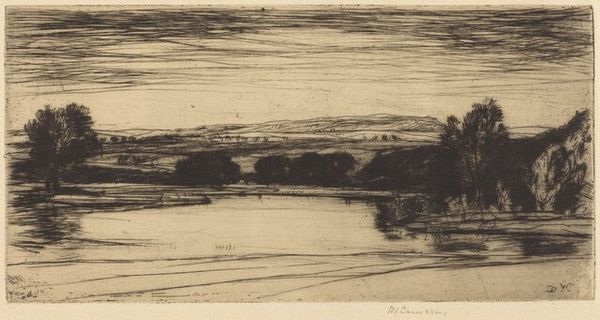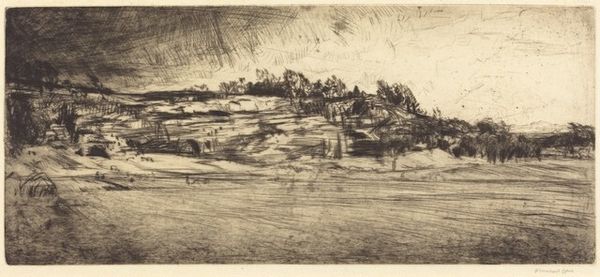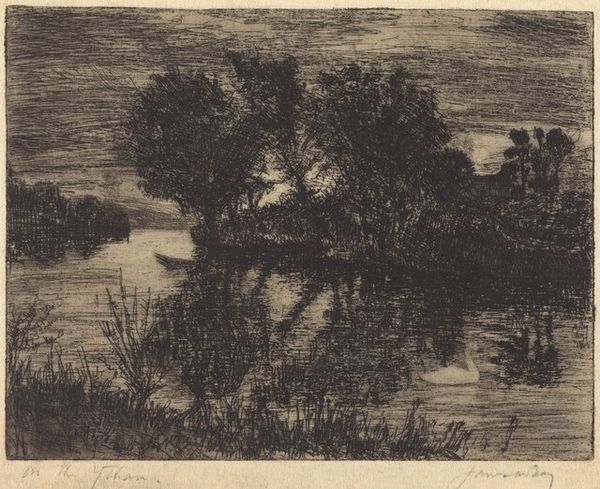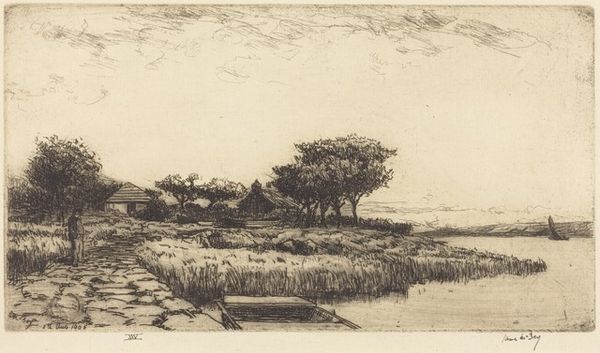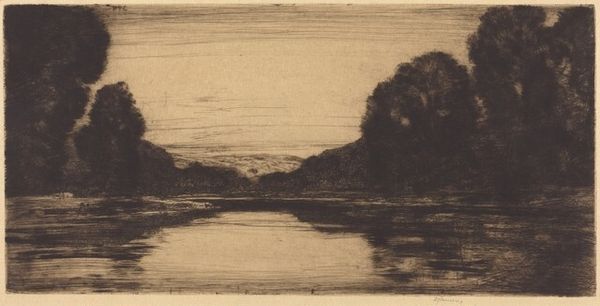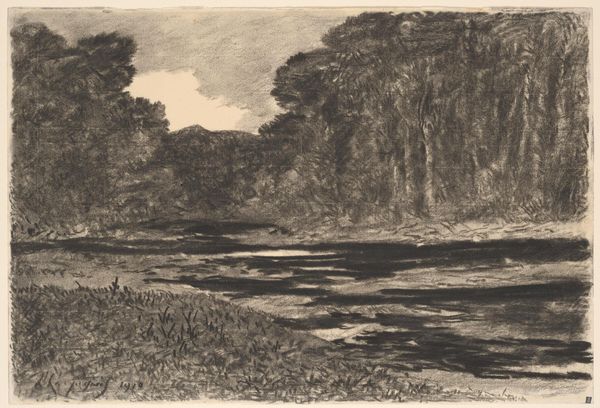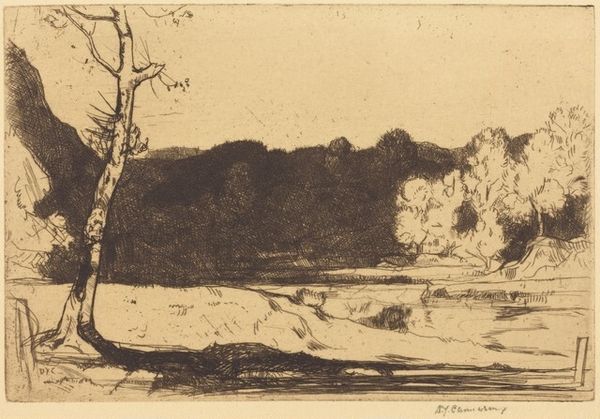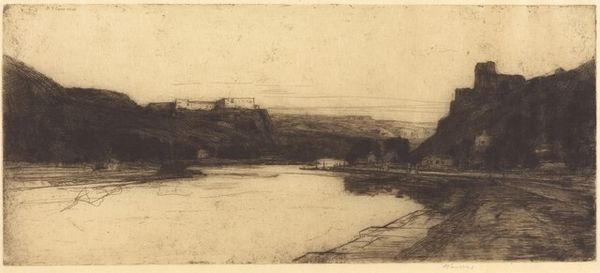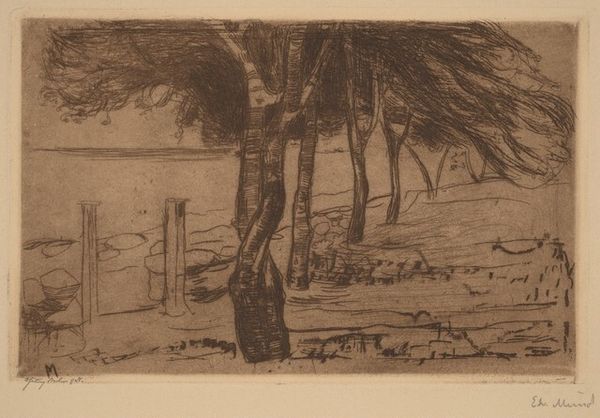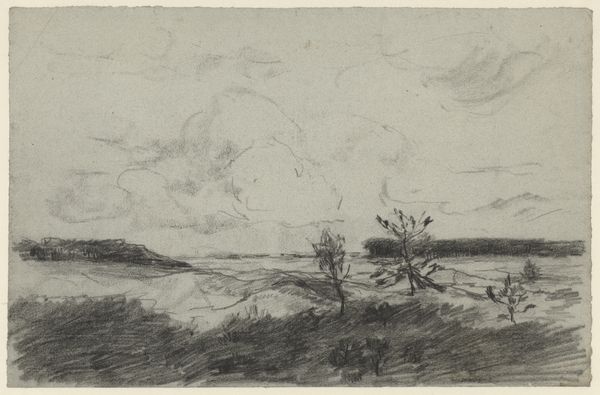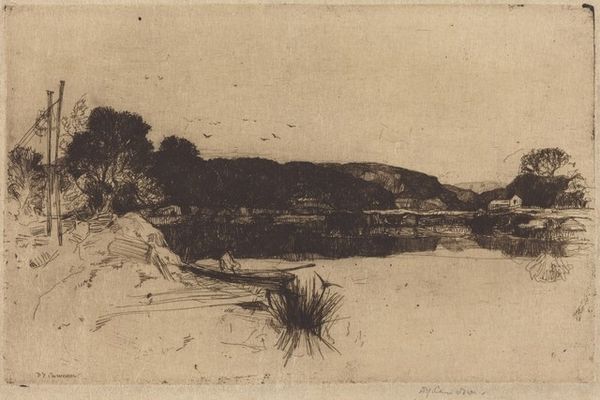
print, etching
#
ink drawing
# print
#
etching
#
landscape
#
realism
Copyright: National Gallery of Art: CC0 1.0
Editor: Here we have David Young Cameron's etching "On the Ourthe," created in 1907. The scene depicts a tranquil river landscape. It feels both peaceful and imposing, given the high contrast between the dark land masses and the reflective water. What do you see in this piece, considering its historical context? Curator: Immediately, I'm drawn to the ways in which Cameron seems to negotiate both tradition and modernity. This landscape evokes the romanticism of earlier landscape painters, celebrating the sublime power of nature. However, the etching technique, with its emphasis on line and tone, also reflects the rise of industrial printmaking and its democratizing influence on art. Editor: Democratizing? How so? Curator: The rise of printmaking in the late 19th and early 20th centuries allowed for wider circulation of art. Etchings like this made art accessible to a broader public beyond the traditional elite. It’s interesting to consider, then, the implications of depicting a rural scene – was this an attempt to preserve an idealized vision of nature amidst rapid industrialization and urbanization, a kind of visual resistance? Or did it further romanticize already oppressive socio-economic conditions in rural Belgium? Editor: That's a really thought-provoking way to frame it. The darkness of the hills contrasted with the light reflecting off the water suggests both opportunity and also obscured hidden areas of society, doesn't it? Curator: Exactly. Consider also the relative absence of people. The cattle by the river, maybe even a boat in the far distance…what impact does this choice have? How are we as viewers positioned to interpret that absence? The setting feels both intimate and detached. Thinking about it further opens questions about representation, class, and access during this pivotal historical moment. Editor: This has made me consider not only the technical skill involved but the possible underlying commentary about social and political dynamics embedded in this seemingly simple landscape. Curator: Absolutely, that's the beauty of engaging with art through an intersectional lens. We begin to see the layers of meaning and social commentary that might otherwise remain hidden beneath the surface.
Comments
No comments
Be the first to comment and join the conversation on the ultimate creative platform.

